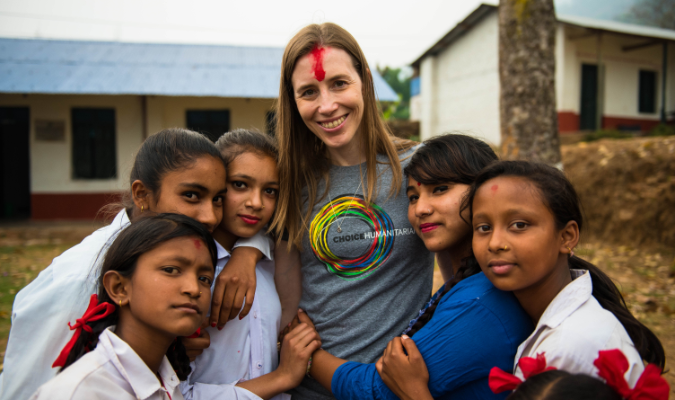How modern BI is helping a nonprofit fight extreme poverty
…

There was a time when CHOICE Humanitarian had access to Domo’s modern BI platform but wasn’t fully leveraging it. “It was pretty much just sitting there,” recalled Brit Meyer, the nonprofit’s director of measurement and evaluation.
That all changed in 2017, shortly after Brit, who lives in Colorado, joined the Salt Lake-based organization and was introduced to volunteer Dustin Weghorst, a graduate student at the University of Denver with a penchant for problem-solving.
“Dustin helped me set up our entire donor management system in Domo without having a schema,” Brit said. “We just worked through it, figured it out, and connected it all.”
Since then, Domo has become a true game-changer for CHOICE, which has been working to reduce devastating poverty in rural communities around the world for almost 40 years.
With Domo, Brit and his colleagues have been able to establish key performance indicators (KPIs) that align with CHOICE’s overarching goals, create detailed annual reports that the leadership team can easily make sense of, and monitor the progress of various projects the organization has going on in eight different countries.
What’s more, they can now more accurately decipher just how much expeditions cost CHOICE, understand the organization’s financial situation anytime from anywhere, and tell data-driven stories, which resonate more effectively with grant-giving institutions, Brit said.
Domo has even enabled Brit to build charts for a book that one of CHOICE’s co-founders wrote (called Extreme Poverty Eliminated) and the entire team to develop more informed sustainability programs in the Former Bennett Freeze Area (FBFA) of Navajo Nation, an American-Indian territory covering more than 17 million acres across parts of Utah, Arizona, and New Mexico.
“My vision with Domo has always been twofold,” Brit said. “One is the external-looking piece, built around things like maps you can drill into to see the work we’re doing in different countries. And the other is operational efficiency, so our leadership team can truly understand what we have (to spend) and make better decisions because we have data to support it.”
When it comes to how Domo has most helped CHOICE make such big strides with the platform, Brit points to the fact that the product is constantly evolving—“the quick filters that were added a few years ago and the new Magic ETL have been big for us,” he said—and is something that anyone within the organization can learn and leverage quickly.
“You can take someone that is not a data scientist and they can do an awful lot with Domo,” Brit said. “The fact that it’s an end-to-end solution is really important. It takes care of everything.”
As for what the next phase of implementation involves, Brit is focusing mainly on user adoption. “I’d like to get more CHOICE staff members and field teams using data on their own,” he said, “and using dashboards and alerts to become more self-sufficient.”
In the meantime, CHOICE, which became a Domo customer through the Domo for Good social good program and was recently recognized by Fast Company for what it’s been able to achieve in collaboration with Domo, will still operate on a level it wasn’t even close to four years ago.
“When you’re a nonprofit where 85% of the dollars coming in goes to projects, it’s really hard to do anything else,” Brit said. “It’s really hard to do the analysis you need to do. It’s really hard to report back to different donor sets and say, ‘Here’s the progress.’ And so being able to integrate with Domo and some of its partners … well, it’s really transformed the way we work.”
To learn how Domo can help your organization build a modern business driven by data, click here. To see how Domo for Good connects nonprofits that want to change the world with Domo customers and tools that can assist, go here.
What's Your Reaction?


























:quality(85):upscale()/2024/09/09/785/n/1922283/901e710666df358b373de2.40207443_.jpg?#)
:quality(85):upscale()/2024/07/23/904/n/1922283/dc92642c66a0159ee98db4.72095370_.jpg?#)
:quality(85):upscale()/2024/07/10/842/n/1922283/8fb902af668edd399936b2.17277875_.jpg?#)
:quality(85):upscale()/2024/06/07/909/n/1922283/82a389f8666372643f2065.06111128_.jpg?#)
:quality(85):upscale()/2024/06/07/726/n/1922283/10bee64e666334778cf548.63095318_.jpg?#)
:quality(85):upscale()/2025/02/03/788/n/1922283/010b439467a1031f886f32.95387981_.jpg)
:quality(85):upscale()/2025/01/08/844/n/1922398/cde2aeac677eceef03f2d1.00424146_.jpg)
:quality(85):upscale()/2024/11/27/891/n/1922398/123acea767477facdac4d4.08554212_.jpg)
:quality(85):upscale()/2024/12/02/919/n/1922398/2b4b75f6674e20edcc99c3.42112799_.jpg)
:quality(85):upscale()/2024/10/29/690/n/1922398/e9bec6b46721006258d949.01358236_.jpg)












